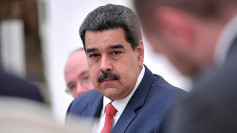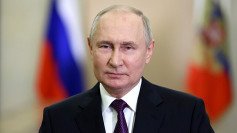Euro zone inflation fell more than expected in March, dropping to 2.4% from 2.6% in February, according to data released by Eurostat on Wednesday. The unexpected decline, driven by lower food, energy, and industrial goods prices, has bolstered the case for the European Central Bank (ECB) to start cutting interest rates from record highs.
The drop in inflation, which defied expectations for a steady rate, brings the ECB closer to its 2% target. Core inflation, which excludes volatile food and energy costs and is closely watched by the central bank to gauge the durability of price pressures, also fell to 2.9% from 3.1%, coming in below the 3.0% forecast by analysts.
Despite the encouraging signs, the ECB may still have some concerns, particularly regarding the services sector, where inflation has been holding steady at 4.0% for months. This suggests that relatively quick wage growth is keeping prices in the sector under constant pressure.
The debate among policymakers and investors has now shifted to how soon and how fast the ECB will unwind its record rate hikes. While the central bank is expected to acknowledge the improved outlook at its meeting next week, it is unlikely to cut rates immediately, having repeatedly pointed to June as the next crucial meeting for policy setting.
Investors see almost no chance of a cut on April 11 but have fully priced in a move for June, followed by another two or three steps later this year. The ECB has been cautious in starting to ease policy because it only expects inflation to return to its 2% target next year, even as some private forecasters take a more benign view, projecting the headline rate to be around 2% by this autumn.
The central bank has said it needs to see essential wage data from the early part of the year before it is comfortable easing policy. Some policymakers also fear that moving too far before the U.S. Federal Reserve begins reducing rates could be counterproductive, as a cut would weaken the euro and boost imported inflation.
Wages have been growing relatively quickly in recent quarters, but the pace of growth is slowing, and workers are still only slowly recouping real purchasing power lost to several years of rapid inflation. However, unemployment remains at a record low of 6.5%, suggesting that the labor market is still exceptionally tight.
Dovish policymakers argue that economic growth is now exceptionally weak, as the euro zone has been skirting a recession for six quarters. This weakens corporate pricing power and thus eases price pressures, allowing the ECB to ease up on the brakes, especially since lower commodity prices are also helping disinflation.
While the ECB is far from settled on how far rates could fall, most appear to agree that the deposit rate, now at 4%, will restrict growth at least until it hits 3%, so the initial cuts are more about easing restriction than providing stimulus.
In the two biggest economies of the euro zone, Germany and France, annual inflation fell to 2.3% from 2.7% and to 2.4% from 3.2%, respectively. Carsten Brzeski, global head of macro at ING bank, noted that the data from Germany "brings some relief for the ECB."
As the ECB navigates the delicate balance between controlling inflation and supporting economic growth, the unexpected decline in inflation has strengthened the case for rate cuts. However, the central bank will likely remain cautious, closely monitoring wage data and the services sector before making any decisive moves to ease monetary policy.






